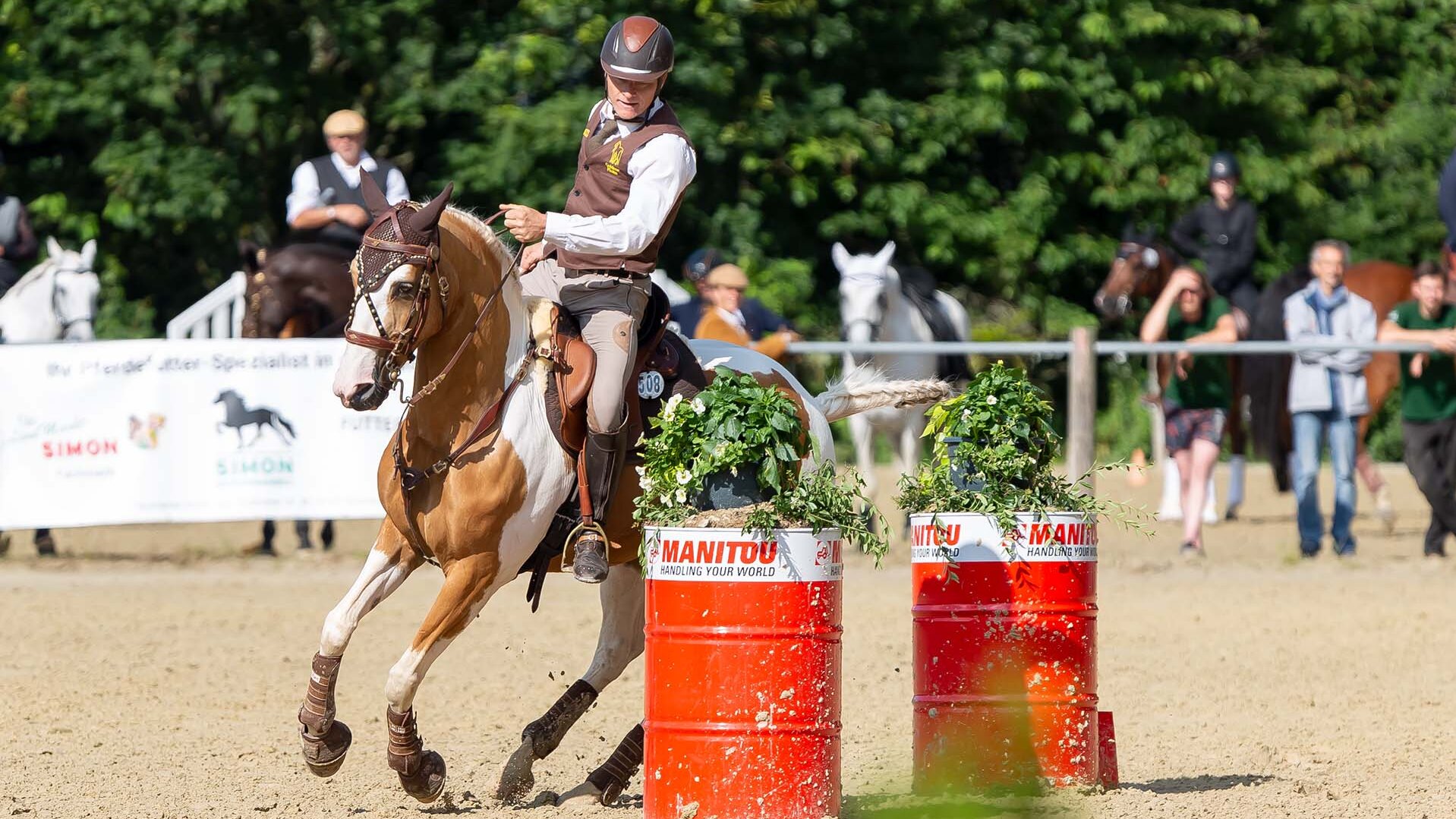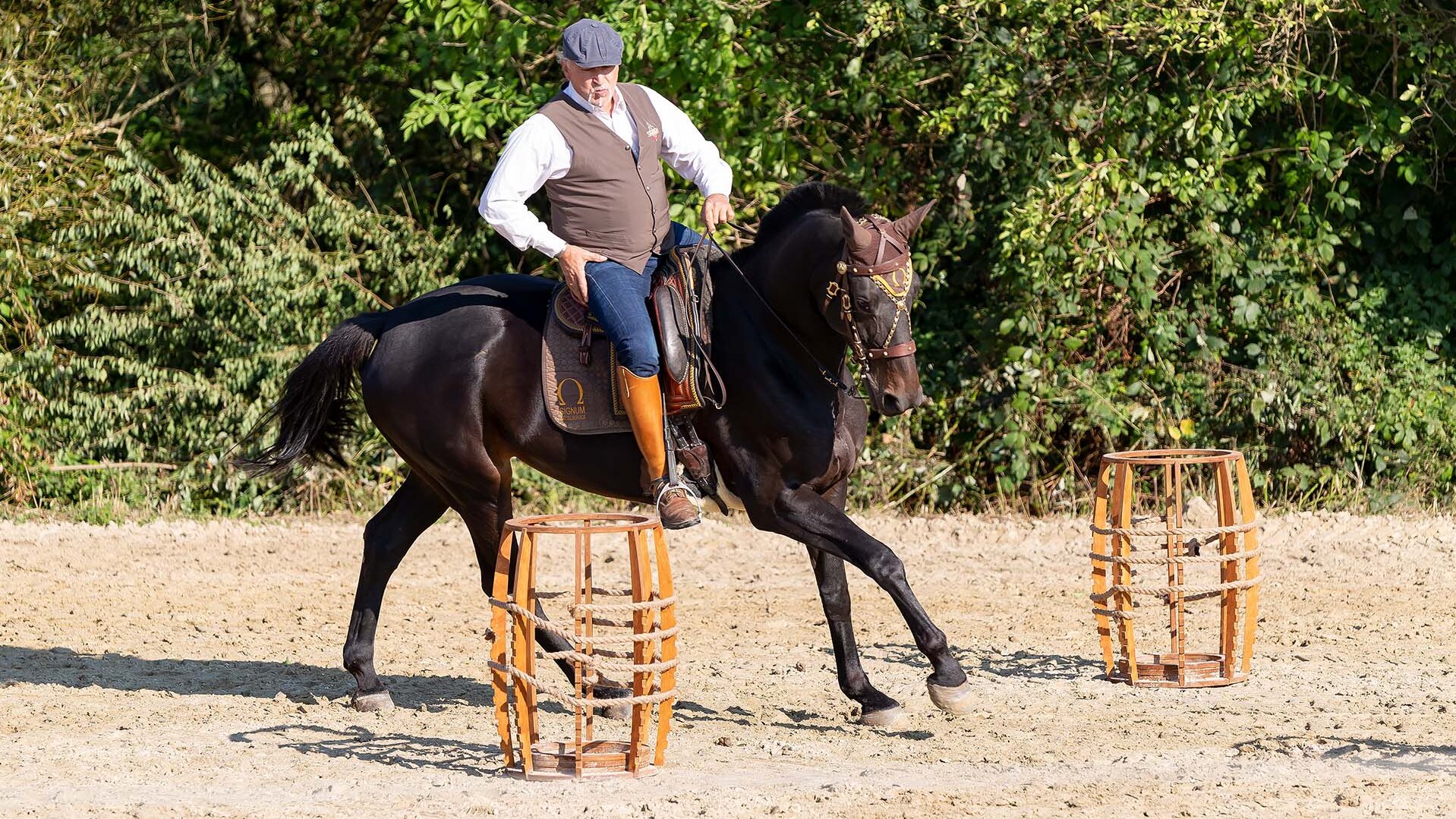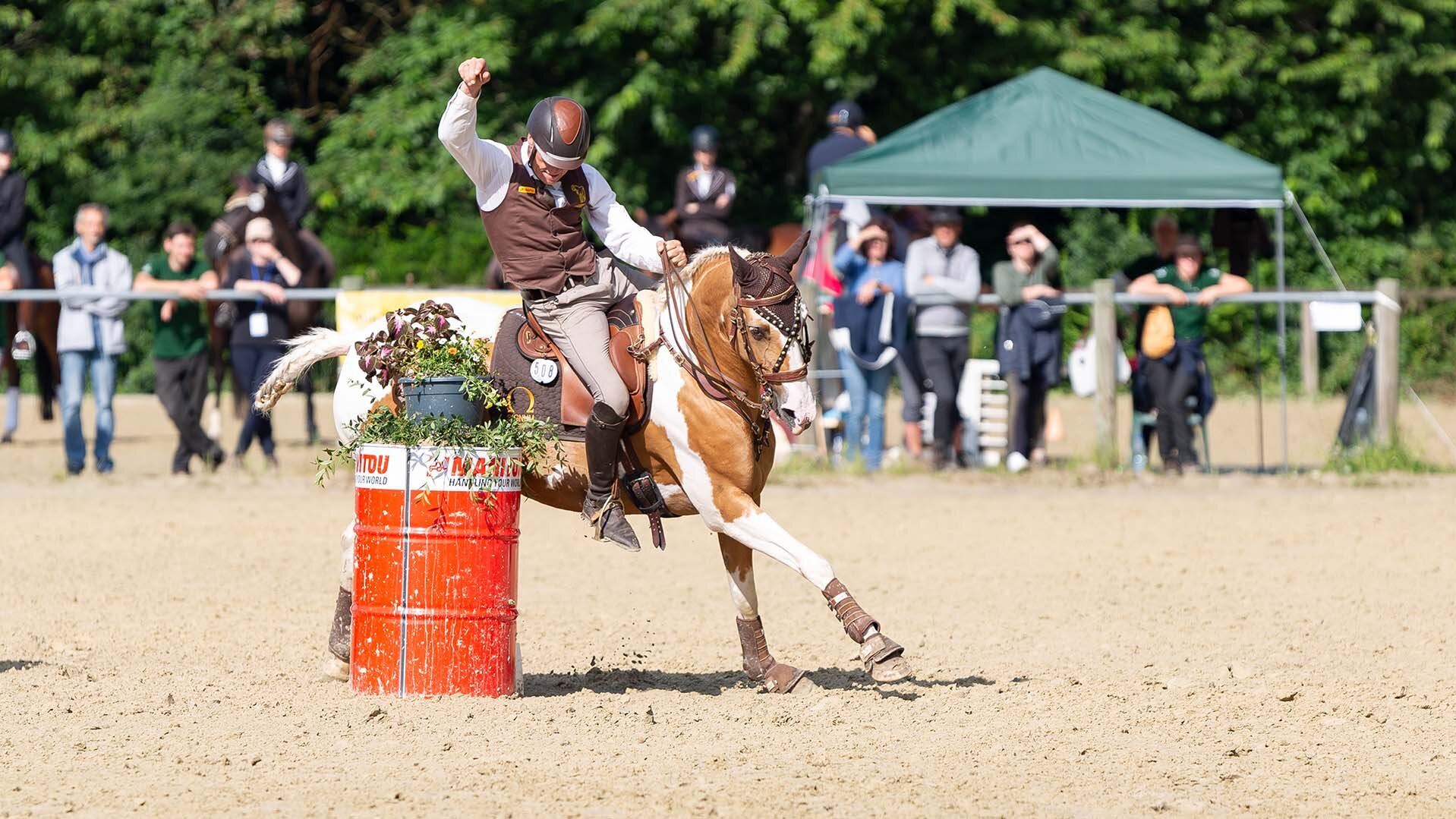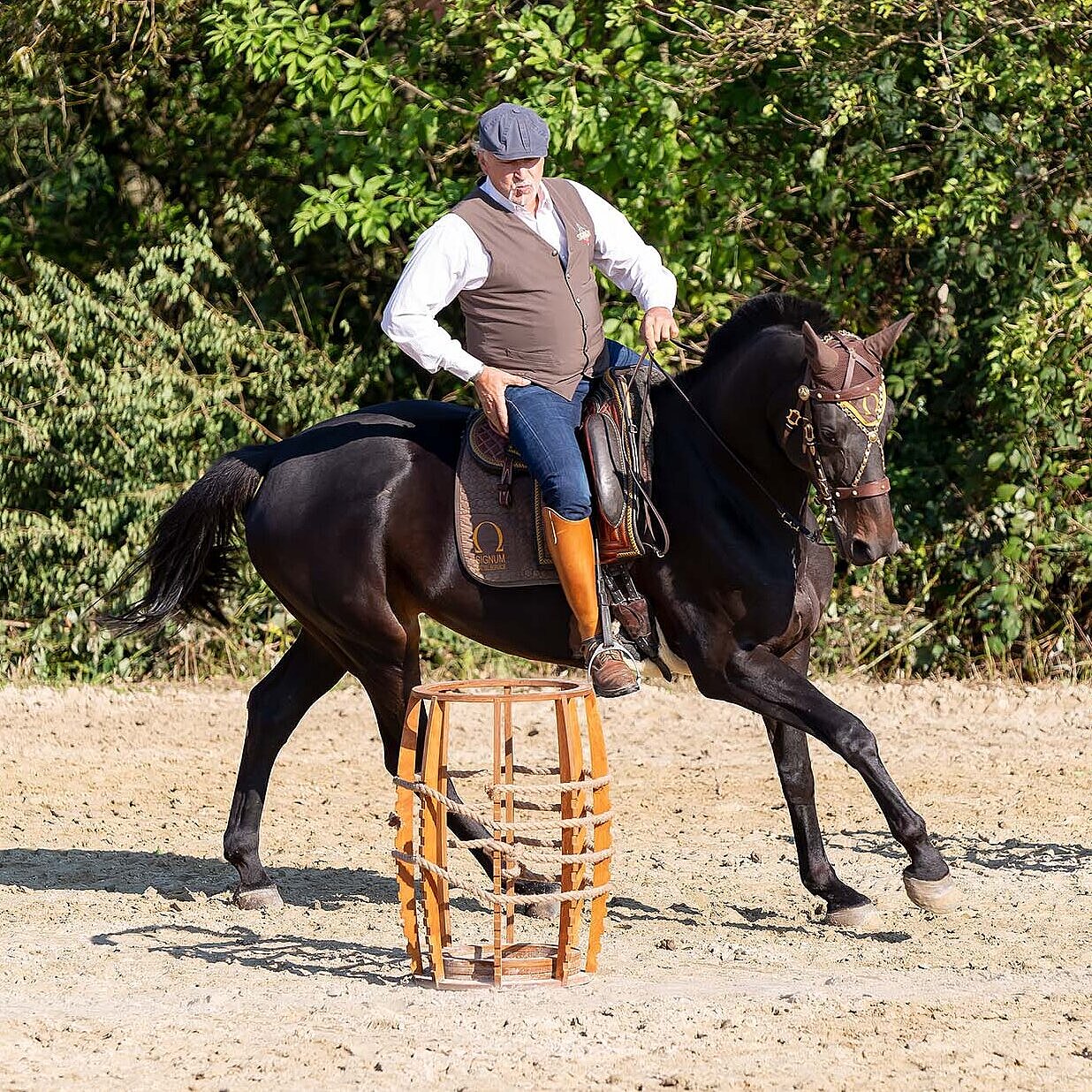The Working Equitation Trail Obstacle Barrels

Various Working Equitation trail obstacles can be constructed from the barrels: The 2-bay barrels ridden forwards and backwards as well as the 3-bay barrels. They are also part of the task of picking up and putting down the garrocha.
The theory of barrels
In this first theory section, Gernot Weber shows you what the idea behind this trail obstacle is and gives you training ideas and tips. Just watch and ride - true to our motto: Working Equitation - the new fun in riding.
The barrels in practice
Gernot Weber and Anja Mertens with Con Solido show you in this second practical part what the idea of this trail obstacle is and how you can start with your horse at this obstacle. Just watch and ride it!
The barrels in dressage Trail
In the dressage trail, the two barrels are permitted in all performance classes. The rider demonstrates his skill and the manoeuvrability of his horse by riding two closed voltes around the two barrels. Seen from above, the rider's path corresponds to a horizontal figure of eight.
At the beginning, the barrels can be circled at a trot; in the master class, this is required at a canter with a flying change between the barrels.

In the higher performance classes, this obstacle can also be ridden backwards. In this case, the rider must ride the horse backwards on a curved line and perform the voltes just as evenly as in the forward version. In Working Equitation, backing up is not seen as a punishment for the horse, as in some other concepts, but could be compared to another gait. The trail obstacles require a horse that can step forwards and backwards with ease and manoeuvrability.
Another level of difficulty is 3 barrels, which are set up in the shape of a triangle. Here the rider must go completely round all 3 barrels with equally large voltes.
The barrels in the Speed Trail

In the speed trail, horse and rider have to round the barrels as quickly as possible. The speed must be chosen so that the voltes do not become too big or one of the obstacles is knocked over. This is penalised with an expensive time penalty of 5 seconds!

